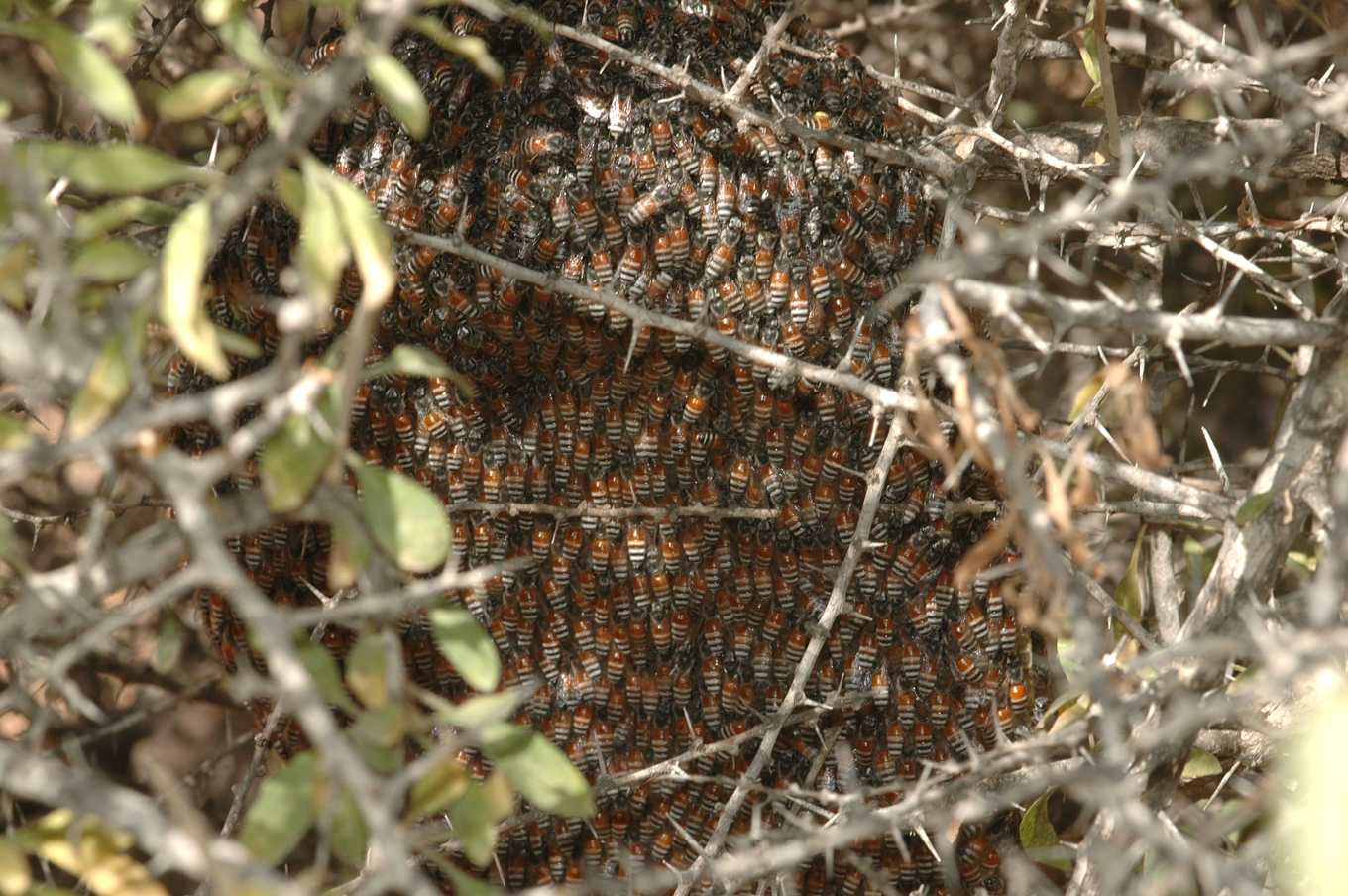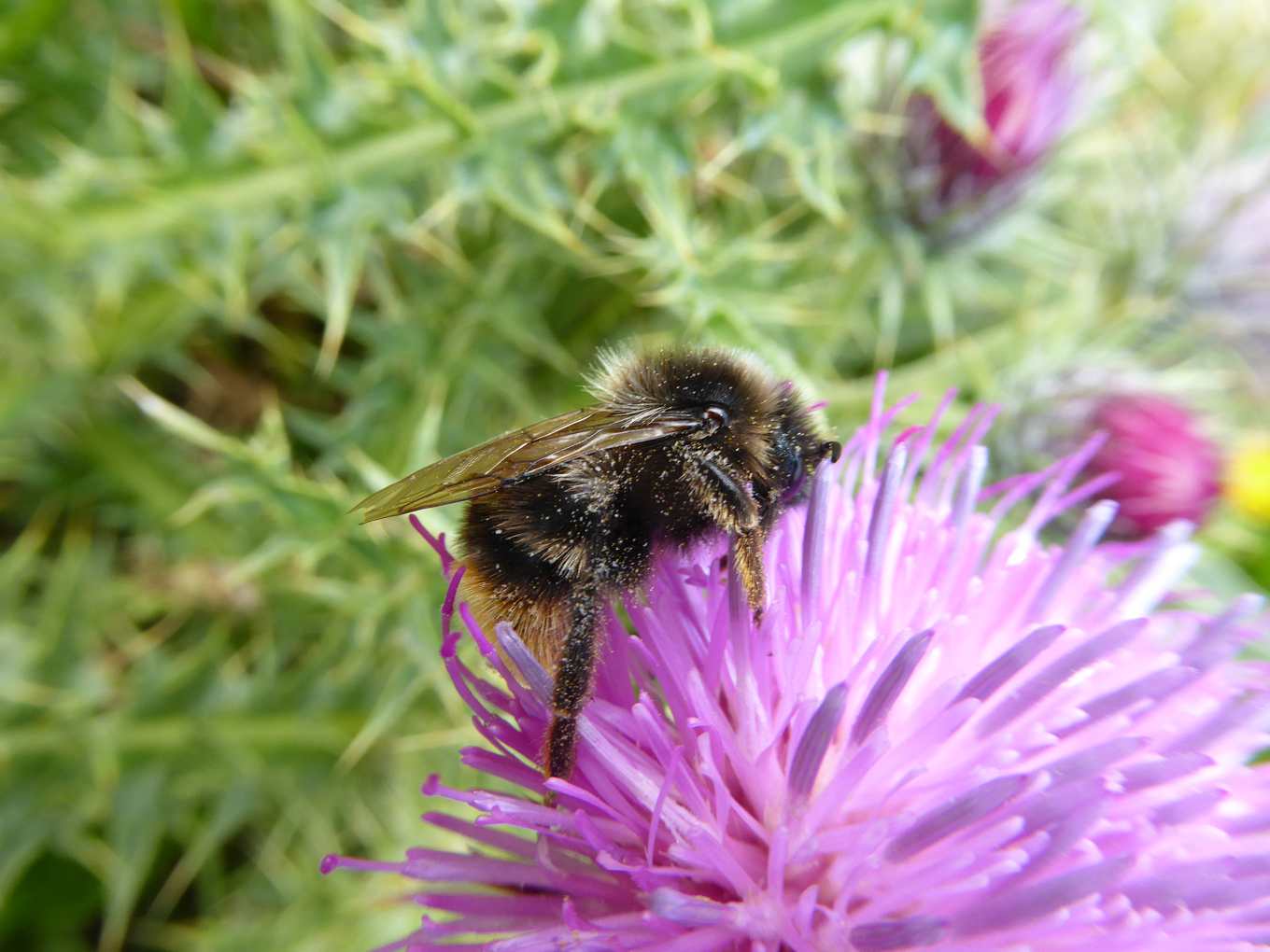Let the bee free 02 "bee hybrid migration, bee crab mites follow, experts: attach importance to native bee species, let bees naturally
15 share
In apiculture, there is also the myth that monks can recite sutras from afar. Bee farmers love queen bees with distant genes, and believe that this is the guarantee of many children, many grandchildren and more production.
However, the artificial hybrid king triggered the spread of bee crab mites (Varroa destructor), causing headaches for bee farmers all over the world. Taiwan is no exception. According to statistics from 2016 to 2017, 90% of the reported cases of acute poisoning by honeybees have been found to control bee and crab mites, indicating that mite damage is widespread.


Pollen storage of honeybees (photo / P. Fontana) Bee hybrid migration, bee crab mites follow
Under the largest number of Western honeybees in the world, there are 31 subspecies, such as the Italian bee (Apis mellifera lingustica) commonly found in Taiwan, and the Sicilian bee (Apis mellifera siciliana) and the European black bee (Apis mellifera mellifera). Because subspecies can mate with each other, breeding king experts have allowed Europe, Africa, the Middle East, Central Asia and other subspecies to cross, and their offspring have flourished, and these high-yielding western bees have also begun to "colonize" Asia.
In 1960, the epidemic of bee crab mite was first reported by Western honeybees in Japan, which quickly spread to the former Soviet Union. It spread to Central and South America in the 1970s, and Italy reported the first case in 1981. European countries fell one after another, and the United States, New Zealand and Australia were not spared.
"Western bees conquered Asia and then passed it back to Europe, resulting in bee crab mites." Italian entomologist Paolo Fontana explained to the "upstream and downstream" reporter, while drawing the transmission path, "there were no bee and crab mites in Europe, but they already existed in Asia, so Apis Cerana slowly evolved a way to 'coexist' with uninvited guests, such as dividing bees frequently and abandoning the old nest occupied by bee and crab mites. In addition, the incubation period of oriental worker bees is relatively short, the bee crab mites parasitic on bee eggs do not have time to grow up, and the drones with longer incubation period suffer more seriously. "


Honeybees in the United Arab Emirates (Photo / P. Fontana) should be cultivated on the ground, not left acaricides in the hive.
As the global apiculture industry is highly dependent on western bees, after the spread of bee crab mites, the work of beekeeping has become complicated and heavy, and mite killing has become a necessary skill. "the trouble is that chemically synthesized acaricides often remain in the hive." Fontana points out that many bee-related products are contaminated by bee farmers themselves.
Organic acaricidal techniques are becoming more and more mature, such as using sorrel oxalic acid to isolate the queen bee. But Fontana warns, "when fighting bee crab mites, it is important to restore the ability of bees to adapt to the environment." Don't ship thousands of Italian bees to Norway. They collect a lot of honey in summer, but none of them can survive the winter. What we need to do is to cultivate honeybees on the ground. For example, Taiwan should cultivate local bees that are suitable for Taiwan. "
Pesticides are a threat, and large-scale monoculture crops starve bees to death
Bees are weak and disappear, pollination of many crops becomes a problem, apples, peaches and cherries in the United States suffer, and farmers' incomes decline along with the fruit rate. Farmers turn to other pollinating insects, such as blue orchard bees (Osmia lignaria) and alfalfa leaf cutters (Megachile rotundata), who live alone.

- Prev

Promote Tainan 19 to see moonlight rice Huang Weizhe praised better than Japan's Yueguang rice
The farmers' association of Liuying District in Tainan City officially launched the sale of the new rice variety "Tainan No. 19 to see Moonlight Rice". Mayor Huang Weizhe joined Cai Kuncheng, chairman of the farmers' association of Liuying District, and Director-General Chen Youxin at the Taipei Xinguang Life Insurance skyscraper yesterday (17).
- Next

Using real food to make food
Using real food to make food
Related
- A course of planting techniques and methods on how to grow carrots
- How to plant the latest tulips?
- Is it better to pick tea in the morning or in the afternoon? When is the best time for tea to be picked? what is the third or fifth tea?
- Launch Yuanxiao Happy combination Haocha + Tea Yuan healthy Taste
- Penghu Tourism "Fireworks 20 Parade with You"
- 2022 West Lake Happiness holds "Digital Revitalization Voucher" and draws iphone13 and laptop.
- Banqiao Fuzhou social houses are designed to change start-up combined with police elimination to create a safe and livable environment
- The convenient measure of "mechanical weeding" in Xinbei has been abused and the Agriculture Bureau has imposed heavy penalties on the illegal land consolidation.
- Changgeng University Joins Hands with Four Memory Factories to Rescue Memory Talent Shortage
- The list of Taiwan's top 100 MVP managers is listed by the Director-General of the Farmers' Association of Sanxia District.

